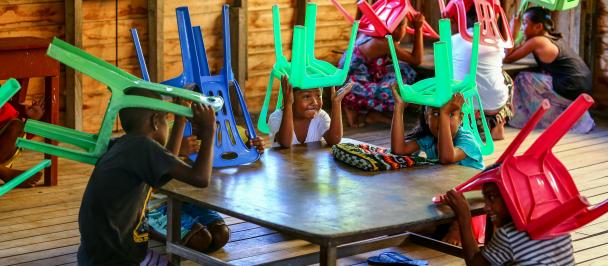What should the inclusive, safe, resilient and sustainable urban development look like?
The battle for sustainable development will be won in cities
October 30, 2018
More than ever before in human history, cities increasingly act as catalytic nodes for human development, socio-economic growth and culture. Yet, urbanization reveals two inherently concurrent dimensions vis-à-vis the emergence of cities as engines of socio-economic development — a rising vulnerability to multiple disaster and climate-related risks.
We often ask - what should the inclusive, safe, resilient and sustainable urban development look like?
First, the key dimension of ‘inclusive, safe, resilient and sustainable cities’ is their ability to anticipate, reduce, mitigate, respond to and recover from a wide range of risks. The increased frequency and magnitude of urban disasters inflict an exponential economic cost as is evident by a string of disasters over the past decade. In big metropolitans as Cape Town and New Delhi, climate change is already aggravating water scarcity. Higher susceptibility to risks tends to manifest in rising inequalities and lop-sided urban development.
Second, governance, including risk governance, is central to resilience building and for fostering risk-informed development. This entails a more integrated and mutually reinforcing planning and implementation approach among socio-economic development actors and a better understanding of the planning-development-risk nexus. Adopting a systems approach that encompasses urban systems, structures, services, resources, capacities and governance will be crucial in this regard.
Third, ensuring sustainability and resilience calls for “redundancy” or sufficient “bandwidth” in urban systems and services. The complex inter-play of urban needs, priorities and issues makes it imperative to invest in ensuring their continued functionality and enhanced absorptive capacity with attention to resilience building beyond urban areas, to include peri-urban areas and the hinterland.
Finally, urban planning must not only keep pace with increasing urban development needs, but anticipate the increasing exposure to vulnerabilities. There is a critical interdependence between susceptibility to hazards and socio-economic variables as access to social safety nets, livelihoods and eco-system services, which is accentuated by inequities as poverty and discrimination.
UNDP’s Strategic Plan (2018-2021) recognizes this emerging reality to ensure a sustainable urban development paradigm. It draws upon the US$260 million invested by UNDP to support 82 countries to shape their development pathways towards sustainability, inclusion and resilience between 2013-2016.
As the thematic lead for the urban risk management and resilience practice area, it is personally gratifying for me to see our policy and programmatic work supporting countries and cities in advancing evidence-based urban development, strengthening urban governance and systems, promoting livelihood resilience and implementing disaster and climate-resilient development solutions. The regional Arab Cities Resilience Project helped three municipal authorities identify actions and benchmarks to measure progress towards resilience building. Similarly, in the Europe and CIS Region, the ICT for Disaster Risk Reduction project helped cities develop ICT based solutions to manage disaster and climate risks as well as other emergencies.
Considering that the battle for sustainable development will increasingly be fought in cities, the center of gravity for action to achieve the Sustainable Development Goals (SDGs) will inevitably gravitate towards urban centres. Ensuring a resilient and sustainable urban development paradigm will necessitate a range of actions involving incremental steps such as improving efficiency within existing technological, governance and value systems, as well as transformational changes, accompanied by a cultural shift in governance contexts.
The facts that nearly two-thirds of the urban infrastructure is yet to be built and that secondary and tertiary cities are emerging as the fastest growing urban areas offer a great opportunity to work towards inclusive, resilient and sustainable cities. Our past experience and future projections testify to this need.
Rejeev Issar is a Policy Specialist in Global Climate Risks and Risk Governance, UNDP. Follow him on Twitter: @rajeevissar9

 Locations
Locations
